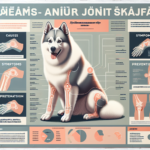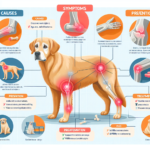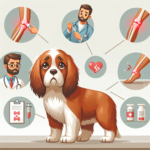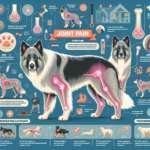Kai Ken Joint Pain: Causes, Symptoms, Prevention, and Treatment
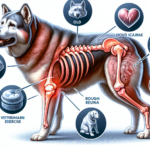
Introduction
The Kai Ken, also known as the Tora Inu or Tiger Dog, is a rare and ancient breed originating from Japan. Known for its distinctive brindle coat and keen hunting abilities, the Kai Ken has a rich history dating back to the mountainous regions of Yamanashi Prefecture. This breed is highly valued for its loyalty, intelligence, and agility, making it a versatile companion for both hunting and family life.
While the Kai Ken is generally a healthy breed, it is not immune to certain health issues. Among these, joint pain is a significant concern that can affect the quality of life for these active dogs. Understanding the causes, symptoms, prevention, and treatment of joint pain in Kai Kens is crucial for ensuring their long-term health and well-being.
Joint health is particularly important for the Kai Ken due to their active lifestyle and natural agility. Maintaining healthy joints allows them to continue their activities without pain or discomfort, ensuring they remain happy and active throughout their lives.
Breed-Specific Joint Pain Risks
Genetic Predisposition
Like many breeds, the Kai Ken is genetically predisposed to certain joint-related issues. Hip dysplasia, a condition where the hip joint does not fit properly into the hip socket, is a common concern. This can lead to arthritis and significant pain over time. Elbow dysplasia, another genetic condition, affects the elbow joint and can also result in chronic pain and mobility issues.
Age-Related Risks
As Kai Kens age, the risk of developing joint pain increases. While they are generally robust in their younger years, signs of joint issues may start to appear as they reach middle age, around 5-7 years old. Senior Kai Kens, typically over 10 years old, are more susceptible to arthritis and other degenerative joint conditions.
Activity Level and Joint Stress
The Kai Ken’s high activity level can contribute to joint stress. These dogs are known for their agility and endurance, often engaging in activities like hunting, running, and playing. While exercise is essential for their overall health, excessive or high-impact activities can strain their joints, leading to wear and tear over time.
Common Symptoms of Joint Pain in Kai Ken
General Symptoms
- Limping or favoring one leg
- Stiffness, especially after rest
- Reluctance to move or climb stairs
- Decreased activity or playfulness
- Visible discomfort or pain when touched
Breed-Specific Symptoms
In Kai Kens, joint pain may manifest as a reluctance to engage in activities they once enjoyed, such as hunting or running. Owners may also notice a change in their gait or a tendency to rest more frequently during walks.
When to Consult a Vet
If you observe any of the above symptoms in your Kai Ken, it is essential to consult a veterinarian promptly. Early diagnosis and intervention can significantly improve the prognosis and quality of life for your dog.
Preventive Measures for Joint Health
Exercise Recommendations
Regular, moderate exercise is crucial for maintaining joint health in Kai Kens. Activities like walking, swimming, and controlled play are excellent options. Avoid high-impact exercises like jumping or running on hard surfaces, which can exacerbate joint stress.
Dietary Suggestions
A balanced diet rich in essential nutrients can support joint health. Consider incorporating foods or supplements that contain glucosamine, chondroitin, and omega-3 fatty acids. These nutrients help maintain cartilage health and reduce inflammation.
Weight Management
Maintaining a healthy weight is vital for reducing joint stress. Overweight dogs are more prone to joint issues due to the additional strain on their joints. Monitor your Kai Ken’s weight and adjust their diet and exercise routine as needed to keep them at an optimal weight.
Early Screening and Monitoring
Regular veterinary check-ups and early screening for joint issues can help catch problems before they become severe. Discuss with your vet about breed-specific screening tests, such as X-rays or genetic testing, to identify potential joint issues early on.
Treatment Options for Joint Pain
Non-Surgical Treatments
Non-surgical treatments for joint pain in Kai Kens include medications like non-steroidal anti-inflammatory drugs (NSAIDs) to reduce pain and inflammation. Physical therapy, including exercises and hydrotherapy, can also help improve joint function and mobility. Lifestyle adjustments, such as providing a comfortable resting area and avoiding high-impact activities, are also beneficial.
Surgical Options
In severe cases, surgical interventions may be necessary. Common surgeries for joint pain include hip replacement, arthroscopy, and joint fusion. These procedures can significantly improve the quality of life for dogs with advanced joint issues, but they come with risks and require a thorough discussion with your veterinarian.
Alternative Therapies
Alternative treatments like acupuncture, hydrotherapy, and massage can provide additional relief for joint pain. These therapies can help reduce pain, improve mobility, and enhance overall well-being. Always consult with a veterinarian experienced in these treatments to ensure they are appropriate for your Kai Ken.
Lifestyle and Management Tips
Daily Care Routine
A daily care routine for managing joint pain in Kai Kens should include gentle exercise, a balanced diet, and regular rest periods. Incorporate joint-friendly activities like swimming and avoid high-impact exercises. Provide a comfortable, supportive bed to help alleviate joint pressure during rest.
Modifying the Home Environment
Making your home more comfortable for a dog with joint pain can significantly improve their quality of life. Consider adding ramps to help them navigate stairs, using non-slip mats to prevent falls, and providing orthopedic beds for better support.
Long-Term Management
Long-term management of joint pain involves regular veterinary check-ups, ongoing weight management, and consistent use of prescribed medications or supplements. Keeping your Kai Ken active and engaged with low-impact activities can help maintain their mobility and overall happiness.
FAQs About Kai Ken and Joint Pain
What are the early signs of joint pain in Kai Kens?
Early signs include limping, stiffness, reluctance to move, and decreased activity levels. If you notice any of these symptoms, consult your veterinarian for a thorough evaluation.
Can joint pain in Kai Kens be prevented?
While genetic predispositions cannot be entirely prevented, maintaining a healthy weight, providing appropriate exercise, and using joint supplements can help reduce the risk and severity of joint pain.
Are there specific foods that can help with joint health?
Yes, foods rich in omega-3 fatty acids, glucosamine, and chondroitin can support joint health. Consult your veterinarian for dietary recommendations tailored to your Kai Ken’s needs.
Is surgery always necessary for joint pain?
No, surgery is typically considered a last resort for severe cases. Many dogs respond well to non-surgical treatments like medications, physical therapy, and lifestyle adjustments.
How often should I take my Kai Ken to the vet for joint health check-ups?
Regular check-ups are essential, especially as your dog ages. Annual visits are recommended for younger dogs, while senior dogs may benefit from bi-annual check-ups to monitor joint health closely.
Conclusion
Joint pain is a significant concern for Kai Kens, but with proper care and attention, it can be managed effectively. By understanding the causes, symptoms, prevention, and treatment options, you can help ensure your Kai Ken remains active and comfortable throughout their life. Regular veterinary consultations, a balanced diet, appropriate exercise, and early intervention are key to maintaining your dog’s joint health. Taking these preventive measures will not only enhance their quality of life but also strengthen the bond you share with your loyal companion.

